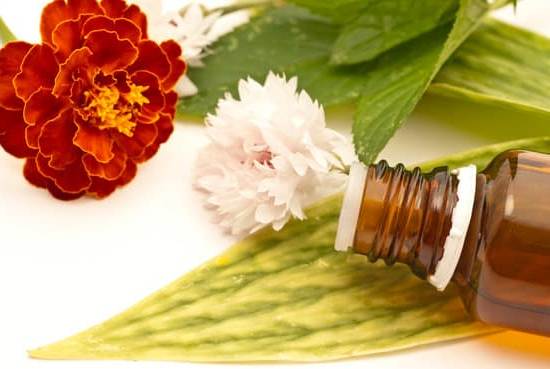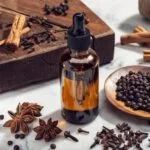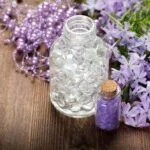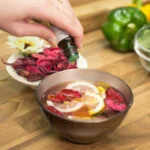Are you looking to learn how to do aromatherapy massage? Look no further. Aromatherapy massage combines the therapeutic benefits of massage with the natural healing properties of essential oils.
In this article, we will explore the various techniques and benefits of aromatherapy massage and provide a step-by-step guide on how to perform it. Whether you are a professional massage therapist or simply interested in learning new relaxation techniques, this comprehensive guide will help you master the art of aromatherapy massage.
Aromatherapy massage offers numerous benefits for overall well-being, including stress relief, relaxation, and improved mental and physical health. By incorporating the use of essential oils into traditional massage practices, aromatherapy massage can enhance the healing effects of touch therapy. Throughout this article, we will delve into the specific techniques used in aromatherapy massage and discuss how they can contribute to a holistic approach to wellness.
When it comes to reaping the full benefits of aromatherapy massage, choosing the right essential oils is crucial. Different essential oils offer unique therapeutic properties that can target specific issues such as anxiety, insomnia, or muscle tension.
Understanding how to select and apply these oils is an important aspect of mastering aromatherapy massage techniques. So if you’re ready to enhance your knowledge and skills in this area, read on to discover everything you need to know about how to do aromatherapy massage.
Aromatherapy Massage Techniques
Effleurage
One of the most commonly used techniques in aromatherapy massage is effleurage. This technique involves gentle and rhythmic strokes that glide over the skin, helping to promote relaxation and stimulate circulation. Aromatherapy essential oils are often incorporated into effleurage to further amplify its benefits.
Petrissage
Petrissage is a deeper massage technique that involves kneading and squeezing the muscles to release tension and improve blood flow. When combined with aromatherapy essential oils, petrissage can provide both physical and emotional relief by targeting areas of muscular tension while also inducing a sense of relaxation through the inhalation of soothing scents.
Tapotement
Tapotement is a more invigorating massage technique that uses rhythmic tapping or percussion movements to stimulate the muscles. While tapotement is typically used for energizing and revitalizing massages, it can also be adapted for aromatherapy by incorporating uplifting essential oils to enhance its rejuvenating effects.
By understanding these various aromatherapy massage techniques and their potential benefits when combined with essential oils, individuals can learn how to effectively use them to promote relaxation, alleviate stress, and improve overall well-being. Those interested in further exploring these techniques can find valuable resources online including instructional videos on how to do aromatherapy massage video demonstrations.
Choosing the Right Essential Oils
Essential oils play a crucial role in aromatherapy massage, as they are the key to providing relaxation and stress relief. When selecting essential oils for aromatherapy massage, it’s important to consider the specific benefits of each oil and how they can cater to the needs of the individual receiving the massage. Different essential oils have unique properties that can target various issues such as muscle tension, anxiety, or fatigue.
For relaxation and stress relief, some popular essential oils used in aromatherapy massage include lavender, chamomile, and bergamot. Lavender oil is known for its calming and soothing properties, making it ideal for promoting relaxation during a massage. Chamomile oil has been traditionally used for its stress-relieving benefits, helping the recipient unwind and de-stress. Additionally, bergamot oil is valued for its mood-boosting effects, creating a sense of positivity and calmness during the massage.
It’s important to note that essential oils should be diluted with a carrier oil before being applied to the skin during a massage. Carrier oils like sweet almond oil or coconut oil help ensure that the essential oils are safely absorbed into the skin without causing irritation. The correct dilution ratio is typically around 2-3 drops of essential oil per tablespoon of carrier oil when used for massage purposes.
Aromatherapy massage provides an excellent opportunity to harness the natural healing properties of essential oils and create a personalized experience for relaxation and stress relief. By carefully selecting the right essential oils based on their specific benefits and properties, you can enhance the overall well-being of the recipient through the power of aromatherapy massage.
| Essential Oil | Benefits |
|---|---|
| Lavender | Calming and soothing; promotes relaxation |
| Chamomile | Stress-relieving; helps recipient unwind and de-stress |
| Bergamot | Mood-boosting; creates a sense of positivity and calmness |
Setting the Mood
Creating a relaxing atmosphere is essential for a successful aromatherapy massage. The right setting can help to calm the mind and enhance the benefits of the massage. Here are some tips on setting the mood for an aromatherapy massage:
Using Candles
Candles are a great way to add a soft, warm glow to the room and create a relaxing ambiance. Opt for natural soy or beeswax candles scented with essential oils that complement the aromatherapy blends being used during the massage. Be sure to place them in safe locations away from any flammable materials.
Calming Music
The right music can greatly enhance the relaxation experience during an aromatherapy massage. Choose soothing instrumental or nature sounds that promote relaxation and calmness. Avoid music with lyrics, as it may distract from the overall relaxation of the experience.
Dim Lighting
Dim lighting helps to create a peaceful and serene environment, perfect for an aromatherapy massage. Use soft, low-wattage bulbs or dimmer switches to adjust the level of lighting in the room to suit individual preferences. Avoid harsh fluorescent lighting, as it can be jarring and disrupt the calming effect of the massage.
By carefully considering these elements when setting up for an aromatherapy massage, you can create an environment that is conducive to deep relaxation and stress relief.
Remember, creating a peaceful atmosphere is just one step in providing a successful aromatherapy massage experience. In our next section, we will delve into preparing the ideal massage area for maximum comfort and serenity.
Preparing the Massage Area
When preparing the massage area for an aromatherapy massage, it is important to create a comfortable and calming environment that will enhance the overall experience. One of the key aspects of setting up the massage area is ensuring that you have a comfortable massage table or bed for the recipient to lie on during the massage. The table or bed should be padded and supportive, allowing the recipient to relax completely during the treatment.
In addition to a comfortable surface, clean linens should be used to cover the table or bed. Fresh linens not only provide a hygienic surface for the recipient but also add to the overall ambiance of the massage area. Soft, clean linens can contribute to a sense of luxury and relaxation during the treatment.
Aromatherapy diffusers can be used to disperse essential oils into the air, creating a soothing atmosphere for the massage. Diffusers come in various designs, from simple reed diffusers to more advanced ultrasonic diffusers that produce a fine mist of essential oils. The choice of essential oils used in the diffuser can also help set the mood for the massage, whether it’s promoting relaxation, stress relief, or invigoration.
Lastly, lighting is an important factor in creating a relaxing environment for an aromatherapy massage. Dimming harsh overhead lighting and using candles can help set a serene mood that complements the effects of aromatherapy and enhances relaxation.
| Aspect | Importance |
|---|---|
| Comfortable Massage Table/Bed | Crucial for recipient relaxation |
| Clean Linens | Hygienic & adds luxury |
| Aromatherapy Diffusers | Sets mood & disperses essential oils |
| Dim Lighting & Candles | Enhances relaxation |
Demonstrating Aromatherapy Massage
Aromatherapy massage is a wonderful way to relax and rejuvenate both the body and mind. In this section, we will provide a step-by-step guide on how to perform an aromatherapy massage, including the proper hand movements and pressure points to focus on. Additionally, we will include a video demonstration for visual learners.
To begin the aromatherapy massage, it is important to create a calming atmosphere for the recipient. Here are some key steps to consider when setting up for an aromatherapy massage:
1. Selecting the Essential Oils: Choose essential oils that are conducive to relaxation and stress relief. Lavender, chamomile, and ylang-ylang are popular choices for their calming properties.
2. Setting the Mood: Create a serene environment by dimming the lights, lighting candles, and playing soothing music in the background. This will help set the tone for a tranquil experience.
3. Preparing the Massage Area: It’s essential to ensure that the massage area is set up comfortably for the recipient. Use clean linens, comfortable pillows, and consider using aromatherapy diffusers to further enhance relaxation.
Once the atmosphere has been carefully curated, it’s time to begin the massage itself. The following are key techniques and steps to follow when giving an aromatherapy massage:
– Effleurage: This technique involves long, sweeping strokes that help warm up the muscles and distribute essential oils evenly across the skin.
– Petrissage: Using kneading motions with your hands, work on deeper layers of muscle tissue to release tension and improve circulation.
– Tapotement: This technique involves rhythmic tapping or percussion movements using cupped hands or fingertips around specific areas of tension.
By following these techniques and steps closely, you can provide an effective aromatherapy massage that promotes relaxation and overall well-being. For more comprehensive instruction, please refer to our accompanying video demonstration on how to do an aromatherapy massage.
Personalizing the Experience
When it comes to aromatherapy massage, personalization is key to ensuring that the recipient gets the most out of the experience. By customizing the aromatherapy massage to cater to the individual’s specific needs, you can provide targeted relief and promote overall relaxation. Here are some tips on how to personalize the aromatherapy massage experience for the recipient:
- Identify Areas of Tension: Before beginning the massage, have a conversation with the recipient to identify any areas of tension or discomfort they may be experiencing. This could be in their neck, shoulders, lower back, or any other specific area. By targeting these areas during the massage, you can alleviate muscle tension and promote a greater sense of relaxation.
- Utilize Personalized Blends of Essential Oils: Different essential oils have unique properties and benefits, so it’s important to select oils that cater to the recipient’s needs. For example, if they are feeling stressed and anxious, lavender oil may be a good choice for its calming and soothing effects. If they are experiencing muscle pain or inflammation, peppermint oil or chamomile oil could be beneficial for reducing discomfort.
- Adjust Pressure and Techniques: Not everyone has the same preferences when it comes to massage pressure and techniques. Some individuals may prefer a more gentle approach, while others may enjoy deeper pressure for releasing tension. Be sure to communicate with the recipient throughout the massage to ensure that you are applying the right amount of pressure and using techniques that are comfortable for them.
For a visual guide on how to personalize an aromatherapy massage experience, you can watch an instructional video on “how to do aromatherapy massage” which can provide a step-by-step demonstration on customizing the massage based on individual needs. This video tutorial can offer valuable insights into adapting your approach to meet the unique requirements of each recipient.
Aftercare and Self-Care
In conclusion, aromatherapy massage is not only a deeply relaxing and therapeutic experience but also a holistic approach to improving overall well-being. By incorporating the use of essential oils and specific massage techniques, aromatherapy massage can provide immense benefits for reducing stress, promoting relaxation, and relieving tension in the body. It is important to choose the right essential oils and create a soothing atmosphere to enhance the overall experience.
After completing an aromatherapy massage session, it is crucial for the recipient to engage in proper aftercare. One should prioritize staying hydrated, as the body flushes out toxins during a massage that need to be replenished. Additionally, allowing time for rest and relaxation is essential to fully reap the benefits of the massage. Practicing self-care techniques at home can extend the effects of the massage, such as using breathing exercises or meditation to continue promoting relaxation.
For those interested in learning how to perform aromatherapy massage at home, there are many resources available including instructional videos on how to do aromatherapy massage. These videos provide step-by-step guidance for performing an effective aromatherapy massage, demonstrating proper hand movements and targeting specific pressure points on the body.
By following these demonstrations and incorporating personalized blends of essential oils, individuals can create a customized aromatherapy massage experience that meets their own unique needs. Overall, integrating aromatherapy massage into one’s self-care routine can be a valuable tool for enhancing physical and mental well-being.
Frequently Asked Questions
How Do You Give an Aromatherapy Massage?
Giving an aromatherapy massage involves using essential oils to enhance the massage experience. The therapist dilutes the essential oils in a carrier oil and applies them directly to the skin during the massage, or diffuses them into the air.
What Happens in a Full Body Aromatherapy Massage?
In a full body aromatherapy massage, the client can expect to experience relaxation and stress relief through the combination of massage techniques and essential oils. The therapist will focus on massaging different parts of the body, incorporating the use of essential oils for their therapeutic benefits.
What Is the Difference Between a Normal Massage and an Aromatherapy Massage?
The main difference between a normal massage and an aromatherapy massage lies in the use of essential oils. While a normal massage focuses solely on manipulating muscles and soft tissues, an aromatherapy massage incorporates the added benefits of inhaling or absorbing essential oils for relaxation, mental clarity, and emotional balance.

Are you looking for a natural way to improve your health and wellbeing?
If so, aromatherapy may be the answer for you.





